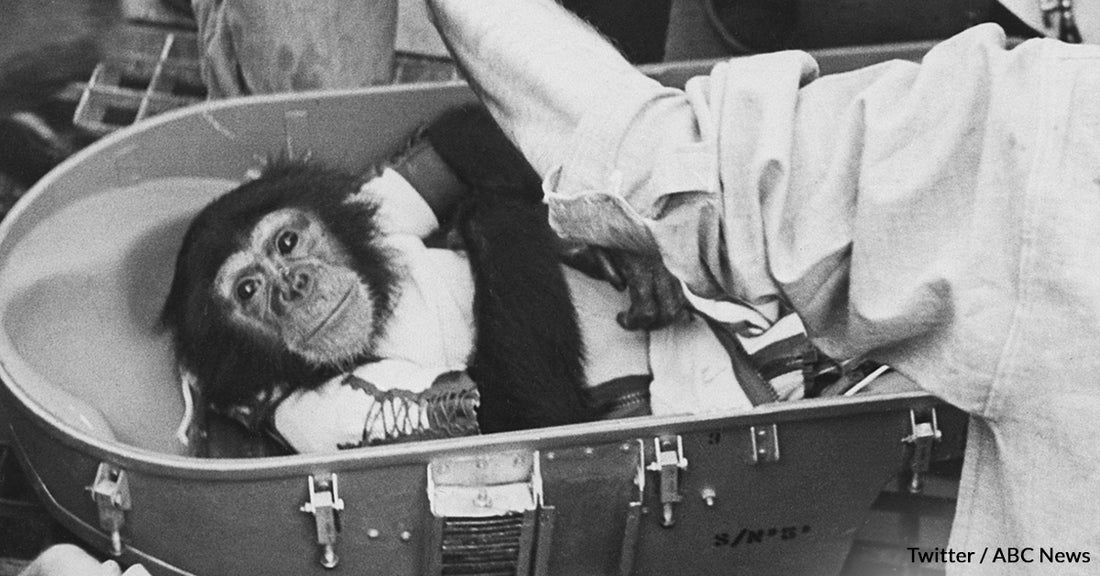Animals In Space: From Fish To Chimpanzees, These Animals Helped Us Explore The Unknown
Louise Peralta
Why do humans aim to go to space?
“Humans are driven to explore the unknown, discover new worlds, push the boundaries of our scientific and technical limits, and then push further,” NASA said.
Sadly, humans are too precious to sacrifice even for the sake of exploring space – the first time around, at least. It might sound sarcastic (it might be), but animals are the prime test subjects as usual.
NASA reasons that, while many experiments can be conducted on humans while they work in space, many others “interfere with daily activities,” and that’s where the animals come into play. They also added that they use animals only when absolutely necessary.
So many animals have been sent to space, but the most known would probably be the numerous species of monkeys. Actually, there have been 32 non-human primates that have flown in space!
There have been so many other types of animal astronauts, and here are some of them:
Fruit Flies
At the top of our list is the first animal that was sent into space back in 1946. The 1946 attempt of launching the first rockets to blast off into space successfully sent fruit flies along with some corn seeds to expose them to cosmic radiation. Fruit flies have a similar genetic and cellular makeup to humans, so they were seen as the perfect subject to test the effects, or lack thereof in this case, of cosmic radiation on humans.
Primates
https://twitter.com/Spacian/status/1404415384875327493?s=20
The first monkey to ever reach space was Albert II, a rhesus monkey, aboard a rocket in 1949. This was part of NASA’s Albert series; the first one also involved a rhesus monkey, but the launch failed, as it only peaked at an altitude of 39 miles, still within the Earth’s mesosphere, and it also faced some technical failures. The Albert series of monkey launches was for the researchers to measure the heart and respiration rates of the mammals.
Data from Albert II was celebrated, as “it gave scientists confidence that a large mammal like a man would someday be able to safely ride a rocket,” Nasa wrote. Other monkeys have successfully returned to Earth from missions that launched in the late 1950s and following years and went back to their normal lives.
Dogs
After NASA’s tests and sending a few more monkeys, along with a number of mice, the Soviet space program used the accumulated research made by NASA to design their own missions. Apparently, the Soviets chose small dogs for their testing, because they figured that dogs would be less fidgety in flight than most animals. Dezik and Tsygan were the first two dogs that went into space in the Soviet R-1 series during the early 1950s. Many other dogs followed suit, but the most famous and impactful one would be Laika, a stray dog that flew aboard the Sputnik 2 on November 1957 and was the first one to orbit the Earth, but she sadly died within a few hours into her mission.
These earlier missions with dogs and primates proved that humans could survive going into space, mostly without significant danger. Laika’s mission and her death also put forth the issue of the use of animals and animal testing in general for the sake of science to the public eye.
Chimpanzees
https://twitter.com/ABC/status/1488107539996758019?s=20
One of the humans’ closest living relatives, a chimpanzee named Ham the Astrochimp, went into space in January 1961 for the Mercury-Redstone 2 mission.
“Ham performed well during his flight and splashed down in the Atlantic Ocean 60 miles from the recovery ship. He experienced a total of 6.6 minutes of weightlessness during a 16.5-minute flight. A post-flight medical examination found Ham to be slightly fatigued and dehydrated but in good shape otherwise. Ham's mission paved the way for the successful launch of America's first human astronaut, Alan B. Shepard, Jr., on May 5, 1961,” said NASA.
Cats
https://twitter.com/airandspace/status/1450215178977562626
We’ve only discussed missions from NASA and the Soviet space program so far; now this entry comes from the French space program that launched a mission that contained the first cat to ever go into space.
Félicette, like Laika, was a stray and was also commemorated on postage stamps. Most sources say that Félicette was the only cat to ever be sent into space, but NASA wrote that a second feline flight was launched a few days after Félicette but ran into some difficulties that prevented any recovery.
Read more about the Astrocat Félicette here.
Other animals that went into space
As this list is already getting too long, here’s a bulleted version of other animal astronauts.
- Guinea Pig
- Turtles
- Wine Flies
- Mealworms
- Rabbits
- Spiders
- Fish
- Jellyfish
- Tortoises
- Frogs





